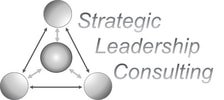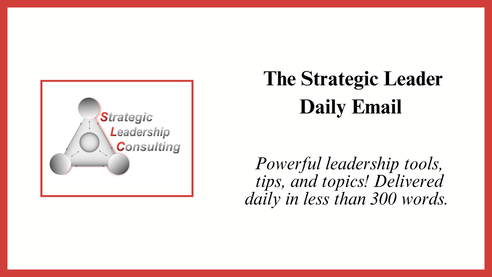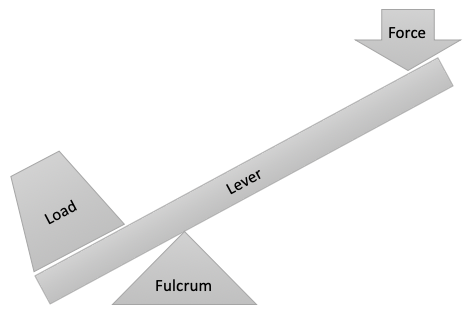|
Colleagues,
Big change is awesome when it works. The problem is that it rarely does. Why? Big change:
Big change also monopolizes organizational focus and resources. Significant implementation timelines make big change initiatives vulnerable to internal and external environmental factors like personnel changes and shifting priorities. However, adopting an incremental approach doesn’t mean you never get to the outcomes promised by big change. Strategic Action Cycles take the principles of leverage and apply them to a specific problem. Each cycle improves the situation a bit more and moves the organization closer to the goal of the big change. You already know why this works. Incremental change:
Leverage is a set of principles which we can apply through Strategic Action Cycles. We won’t be looking at SACs for a while, but I do provide a two-day training on them. If you’d like to know more just email me by clicking here. Friday reflection questions:
Bonus question: If you have someone that is not motivated, is the problem that they don’t see the value in what you want them to do or that it doesn’t actually have value for them? Final reminder: Be intentional about your actions and consult with the relevant stakeholders! Do good and be well, Frederick
0 Comments
Colleagues,
Today we look at one of my all-time favorite truths, shared with me by my former superintendent, incredible mentor, and dear friend Dr. Jan Osborn. M=V/E or motivation equals value divided by effort. How does this apply to leverage? We’ve already learned the following:
Do you see the pattern? By decreasing effort, the other three principles of leverage act to increase motivation! But it gets even better. Addressing issues by moving from point A to point B with an MVP allows us to improve situations immediately. Immediate improvement results in increased value. Knowing that my effort will result in immediate improvement makes the work more valuable. Too many times we expect people to invest lots of time and energy for a big payoff at the end, but most people want (and deserve) to see improvement immediately. This is the power of leverage! Strategic leaders use the principles of leverage to make immediate incremental improvements. This results in increased motivation and a constant cycle of small gains, leading to significant long-term growth of the organization! One more thing…. By developing a track record of solving problems and providing maximum value with minimal effort, a leader builds a savings account of trust. In the face of something that requires great effort without immediate reward, people will trust the leader. They will trust that the value is worth the effort, meaning that they are willing to work hard for something in the future. Do good and be well, Frederick P.S. Would you like to join a community of leaders and be able to have me respond to your specific questions at an affordable price? Soon I will be launching a group coaching program designed to increase strategic actions, build community, and provide support for pressing issues. If you want to learn more, email me here and put "YES" in the subject line. I’ll make sure that you get the inside scoop. Colleagues,
Here is a recap of yesterday: Fence: 4 hrs of research + $100 materials + 8 hrs construction + 2 hrs installation = no digging Netting: 5 minutes scrounging in garden shed + 10 minutes arranging = no digging No digging is my A-B. The net is my MVP, or minimally viable product. The MVP concept comes from the tech and manufacturing industries. It emphasizes early deployment with rapid cycles of improvement. An MVP is designed to meet the most minimal of criteria and then deployed in order to get real-world feedback. Improvements are made based on feedback, the MVP is refined and relaunched, and the process is repeated multiple times. So, why an MVP? Why not go for the “best” solution?
And here is the really incredible thing about an MVP: What if the problem had been moles? I could have spent $100 and many hours building a great fence that had zero impact. The MVP approach is extra powerful when we get things wrong! If we misdiagnose the problem, our resource and time investments are minimal and the speed of an MVP approach means that we get timely feedback to help develop the next solution. Are you dealing with moles or rabbits? Or maybe birds? How do you make the situation better right now? Do this: Think about a complex issue you are facing. Think about something that you could do immediately that would make the situation a tiny bit better. That something is an MVP. Do good and be well, Frederick Colleagues,
Last month I planted out my garden. Twice in the first week something dug it up. I wasn’t sure what critter was responsible, but I spent several hours looking at fence designs to protect my raised beds. I went to my local farm supply and lumber stores and came home with $100 worth of materials. The fence would take a couple days to build, but the next morning my garden was torn up again! Frustrated, I threw some cheap bird netting over the beds until I could build the fence. The digging stopped. Let’s review: Fence: 4 hrs of research + $100 materials + 8 hrs construction + 2 hrs installation = no digging Netting: 5 minutes scrounging in garden shed + 10 minutes arranging = no digging By initially turning to my fence as a solution, I was focused on going from point A (garden getting torn up) to point Z (nice looking, effective, convenient fence). However, there was a lot that needed to happen to get from A-Z, and in the meantime my garden continued to be attacked. My first response should have been to deploy the netting. That would be A-B. Not as nice looking, not convenient, but effective in the short term. After getting to point B, I could then focus on the next step towards a more elegant solution. Strategic leaders focus on going from A-B in order to get immediate results. A-B works with the other elements of leverage in that:
Are you wrestling with an issue? What is the first step towards improving it? That’s A-B. Do good and be well, Frederick “Give me a place to stand and with a lever I will move the whole world.” - Archimedes
Zero is Greater Than One (0>1)Zero represents a problem before it fully manifests itself and one represents the same problem fully existing in all of its glory. When we are working at zero we are working in quadrant 2. Generally, preventing a problem before symptoms appear takes less effort than dealing with it after it has become a problem. Optionally, dealing with an issue when it first presents itself is easier than waiting until it has become entrenched or widespread. As an element of leverage, zero is a fulcrum that is close to the load. As all four aspects of leverage work together, the fulcrum influences the other three parts in this way:
Tomorrow we’ll look more closely at moving A-B. Do good and be well, Frederick |
Categories
All
Archives
July 2024
|




 RSS Feed
RSS Feed